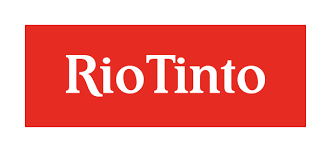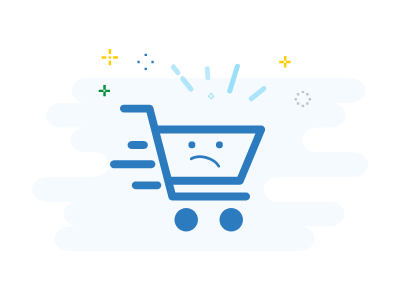Lean Six Sigma in Mining
Why apply Lean Six Sigma in Mining?
The mining value chain of an operating business starts from extracting the ore out of the ground, through to mineral processing, smelting or refining, and finishes with the delivery of the ore concentrate or metal to the customer. The mine-to-market value chain is made up of interdependent steps with the corresponding activities within each step: mine, processing plant(s), inventory, rail or road, port, ship and market. It is supported by mineral resource exploration, valuation and management, maintenance, logistics, human resources and environmental management. Mining value chains are complex, involving capital-intensive assets such as mining equipment, trucks, railways, processing plants and ports, and global logistics as mines and markets are frequently located in different countries. The life of a mine is finite, as the ore body is gradually depleted while exploring and replenishing with new deposits. Eventually, the mine is closed when it is no longer economical to operate, and the site is remediated or rehabilitated.
The main challenges facing the mining industry are shifts in commodity markets, e.g. strong fluctuations in prices, and tightening regulations, e.g. environmental laws. Being a cyclical business and practically a price taker, with rare exceptions, the mining companies must continually improve on operating costs and asset utilisation and remain profitable even during a down cycle. With ever more stringent environmental regulations, they must continually reduce their environmental impact by significantly decreasing emissions and energy and water consumption.
Lean Six Sigma (LSS) is a data-driven business improvement methodology. It consists of a set of principles and tools to systematically improve a process to a higher performing state. In the case of the mining industry, the market determines the global commodity prices and product quality, such as purity. LSS can help mining companies deliver consistently in specification ore concentrate or metal to the customer at the current market prices in the shortest delivery time, at the lowest cost and highest asset utilisation for maximum profitability while maintaining a safe work environment and meeting legal and communal obligations.
For mining, LSS improves efficiency at the process level. Where implemented and sustained properly, the top benefits at the business level are:
- Increased profits
- Higher customer satisfaction
- Reduced costs
- Shorter cycle or lead time / increased throughput
- Higher productivity and asset utilisation
- Less defects / consistent quality
- Lower inventory
- Improved staff morale and creativity
- Safer and well-organised work environment
What are the key principles of Lean Six Sigma?
Lean Six Sigma focuses on the customer, and value is defined by the customer. In mining, the ultimate customer is the external recipient of the ore concentrate or metal, with internal customers being the recipient of the intermediates downstream of each operation.
The key principles of LSS, in the mining context, are:
- Focus on your customer: Commodity specifications are usually well established in the external market. What other requirements need to be fulfilled which could provide a competitive advantage? Internally, the requirements of the downstream customer should be well understood and consistently delivered.
- Identify your value stream: Map out your existing value stream, showing every single process step, from inputs to outputs, at the required business level.
- Eliminate waste and/or defects: Remove any non-value adding activities or opportunities for defects in your mining, processing or transport operations.
- Maintain momentum: Sustain improvements through clear and effective communication of new standards and practices by leaders and providing necessary training and feedback to employees.
- Create and sustain a culture of continuous improvement: Embed a culture of embracing change and flexibility involving all employees who are empowered to continually look for ways to streamline processes and eliminate waste and defects, thereby ultimately improving business profitability.
How is Lean Six Sigma applied in Mining?
LSS focuses on eliminating waste, reducing process variation and reducing defects at each step in the mining value chain.
The concept centres around speeding up the flow with Lean tools and reducing defects or process variation with Six Sigma tools. Waste and value are identified using value stream mapping of the existing process through direct observations of people and operations and first-hand interactions with workers on the mine or processing site and/or in support functions. Types of waste consist of defects, overproduction, waiting for a machine or person, non-utilised talent of personnel, transporting of items, inventory, the motion of people and extra processing.
As the mining business is typically huge and complex, LSS is usually applied at the operational level in a targeted way for the best return on investment. Management is responsible for identifying, selecting and prioritising areas for improvement in line with the overall business strategy. The areas were chosen for improving cost efficiency or asset utilisation, or intermediate/final product quality should be those which will have the greatest impact on the overall business performance.
Some examples of how LSS is applied in mining are described below.
- In a mining facility, a process improvement team worked on reducing the costs of iron ore pellet production. Using a number of LSS tools, the team investigated the issues thoroughly and identified the root causes. They created a number of solutions for increasing the efficiency of natural gas usage. The best solutions were selected and implemented, resulting in significant fuel cost savings.
- A mining enterprise aimed at eliminating losses and establishing standardised processes using many Lean tools such as 5S, waste elimination, visual management, organisational analysis, teamwork and pull system in production and support functions (development, maintenance, logistics, administration and management). In particular, the optimisation of interactions between functions was critical in creating processes without waste, hence improving business performance.
- A copper and silver producer implemented Total Productive Maintenance tools in their ore processing department to improve processes, e.g. reducing failure rates in the filter presses and introducing new maintenance metrics and standardising repair procedures for the heavy machinery.
- Value stream mapping was employed as the central tool in Lean mining to eliminate non-value adding activities and minimise waste, resulting in increased productivity, decreased costs and improved safety in the workplace.
- Defects and waste were reduced in the production of bituminous materials in the processing of oil-bearing sands.
- LSS tools were used in ore processing to reduce faults and downtime in operations. By investigating the process thoroughly, identifying the root causes and modifying or eliminating certain operations, the results were zero faults after eliminating the chain conveyor of the crusher dedusting system, a significant reduction in total downtime and remarkable extension in trouble-free operation in suction pipelines.
- Greater operational efficiency was achieved in a diamond mine by eliminating duplication or unnecessary activities and implementing automation as much as possible, using ideas generated by employees and contractors, after the existing processes were well characterised and sources of waste and defects identified.
As LSS is a structured methodology requiring statistical, visualisation and facilitation skills, a team of highly trained and experienced staff members or consultants is required to implement, embed and sustain the improved changes, with the unwavering support of management. The initial implementation could be forming an in-house core team of highly trained change agents or engaging an external consultant.
Imagine you now have an improved mining business with measurable and undeniable benefits after applying LSS successfully. What could your improved business go on to achieve? What competitive edge would you have?
How can CBIS help you?
Please contact us if you need more details on how our expert team can assist you. We are simply experts in the application of Lean Six Sigma in the mining sector.
Complete Lean Six Sigma Consulting and Coaching Services from Expert Coaches and consultants.
Attending our Public classroom physically or joining the team virtually from anywhere, according to the training calendar.
A flexible self-paced training for busy people along with our support by a dedicated coach, to solve the disadvantage of one-way online training
Delivering flexible and tailored training for your team and at your premises as a cost-effective solution for your team.









